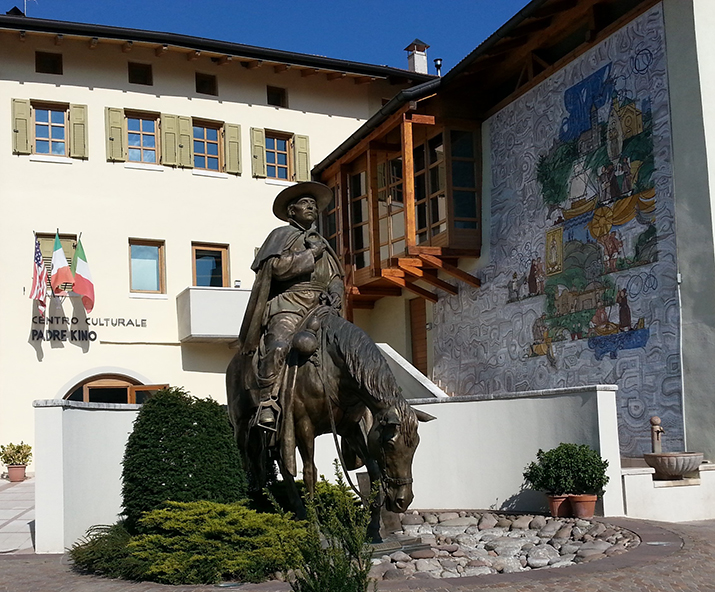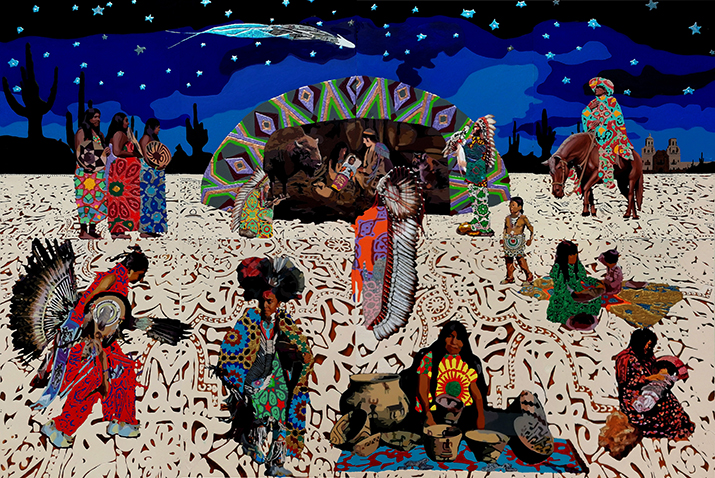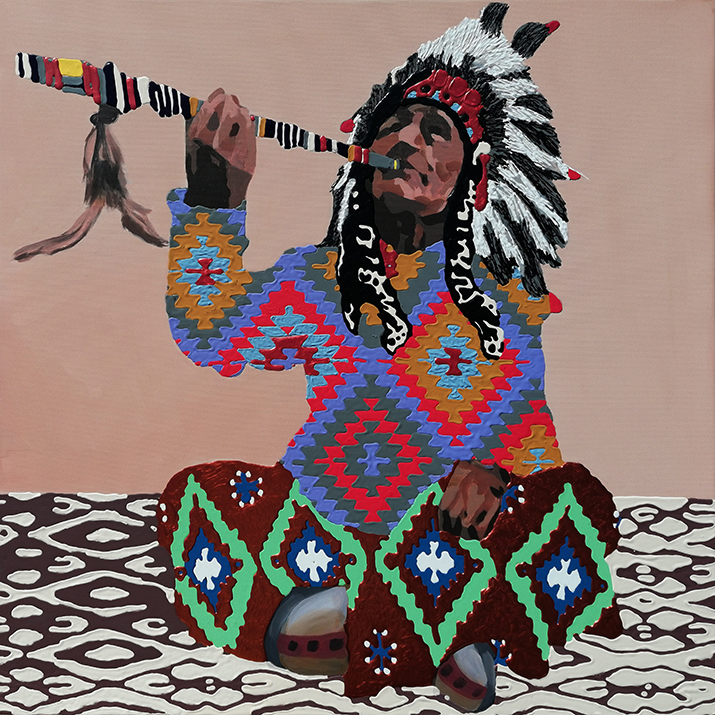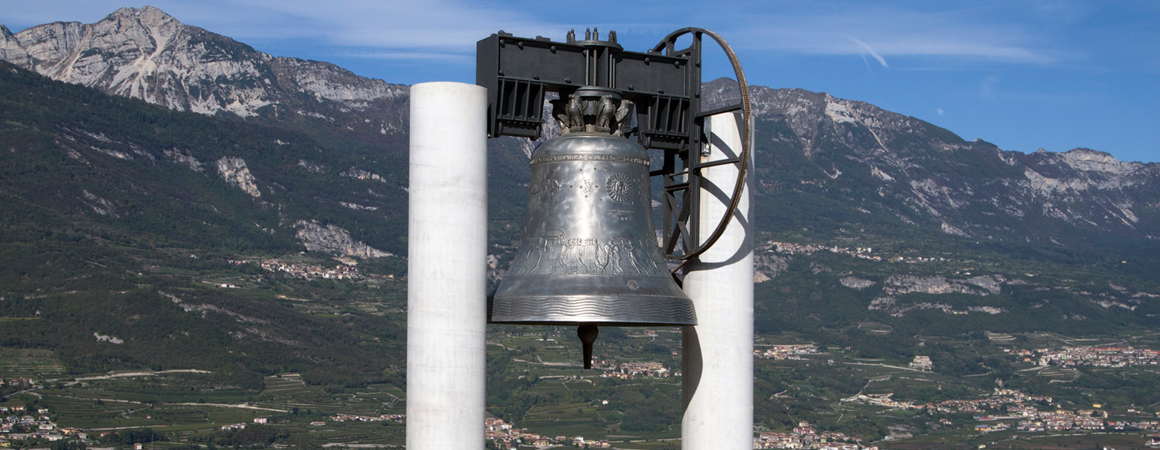MAN OF GOD AND DEFENDER OF NATIVE AMERICAN RIGHTS
The exhibition entitled: «I Kino – Imaginary Diary of the Apostle of the Native Americans. Father Eusebio Francesco Chini (Kino)» is on show until January 28th at the Rovereto Peace Bell Centre. The exhibition offers the visitor paintings by Luigi Ballarin and stories by Mauro Neri. We asked Alberto Chini, President of the Father Eusebio Francesco Chini Cultural Association, to trace the path of a man who, in an era of conquest, managed to reconcile his religious vocation with respect for Native American traditions.
Eusebio Chini was born in Segno, in the Trentino Non Valley, on 10 August 1645. Baptized in the parish church of Torra, he undertook his studies in the Jesuit college of Trento, to continue them in Hall, in Tyrol, where in 1663 he fell seriously ill and, on his deathbed, prayed to Saint Francis Xavier for his recovery, promising to dedicate his life to the missions. Eusebius recovered and as a sign of gratitude added the name of the saint to his already existing name.
He continued his studies at universities in Bavaria then enrolled at the Archducal University of Freiburg im Breisgau to study literature, philosophy, astronomy and natural sciences. In Ingolstadt Eusebio studied astronomy, cartography, geography and mathematics. In 1675 he received a visit from Elector of Bavaria, Duke Ferdinand Maria, who wanted him as a mathematics teacher at the University and in private for his son Max II Emanuel, but he refused the offer owing to his vow to become a missionary.
In June 1677 he was ordained a priest in Eichstätt by the Prince Bishop and underwent his last period of preparation in Altötting, a place of pilgrimage known as the "Loreto of Bavaria".
After repeated requests to the Father General of the Jesuits to dedicate himself to the missions in the Indies as Martino Martini had done a few years before him, he was assigned to the missions of "New Spain".
On 30 March 1678, Eusebio Francesco Chini left Altötting for Genoa where on 17 June he embarked with 17 other Jesuits for Cadiz.
Unfortunately, he arrived there several hours after the departure of the Atlantic fleet. He thus remained in Spain for almost three years where he deepened his knowledge of the Spanish language and taught mathematics and cartography in Seville. Finally on January 29, 1681, he embarked for Veracruz where he arrived after 96 days together with his brothers. During the crossing he observed the Great Comet, or “Kirch's Comet”, on which he wrote a treatise which he then published in Mexico City.
The Jesuit Eusebio Francesco Chini at the age of 36 Hispanicized his name to Francisco Kino after Spanish attempts to create permanent settlements in the Baja California peninsula and, on 13 March 1687, began the undertaking of his life: the evangelization and the civil, social and economic development of the inhabitants of the Pimeria Alta, the tribes of the Pima people, north-east of the Rio Sonora. However, the missionary experience in Baja California remained in his heart. The memory of the Indians to whom he began to teach the Gospel and whom he had to abandon was still alive. His explorations in search of a land passage to Baja California, then believed to be an island, were aimed at providing help to these populations by sending food, seeds and farm animals.
The adventure lasted until his death in 1711: for twenty-four years Father Kino was the soul of the many missions he founded, now thriving cities in the states of Sonora and Arizona. He was both a man of God and defender of American Indian rights. He was an explorer, historiographer, cartographer, pioneer, cowboy and rancher.
He taught the cultivation of fruits and vegetables unknown in those lands and introduced cattle breeding. He strenuously protected the dignity and interests of the locals against the arrogance of the conquerors. He shaped and determined the economic development of a sun-scorched desert land.
He made many exploratory trips north to the Rio Colorado, providing scientific proof that California was a peninsula.
He died at midnight on March 15, 1711, in Magdalena, the same way as he lived: «In peace and poverty, on the edge of something much greater» (P. Charles W. Polzer). The cult of Father Kino was born immediately in Magdalena among the faithful of Sonora, Arizona, Sinaloa, Chihuahua and Baja California. A cult that has transformed, for three hundred years, Father Kino's devotion to Saint Francis Xavier into the homage of the Indians to the pioneer father of Pimeria Alta.
On February 14, 1965, in the National Hall of Statuary in Washington, Arizona experienced a day of great celebration: in the U.S. Capitol Building the statue was dedicated of the founding father of the state, Eusebio Francisco Kino, alongside the most famous figures of the United States. Explorer, Historian, Rancher, Mission builder and Apostle to the Indians reads the writing on the base and summarizes an entire life dedicated to God and the Pima Indians.
In 1966, Mexico dedicated the city of Magdalena de Kino to him with a monumental square and the mausoleum where his mortal remains are kept as an object of veneration. In numerous other cities in America and Mexico, monuments have been erected that commemorate him and testify to their gratitude. In July 2020, Pope Francis declared Father Eusebio Francisco Kino "venerable".
His figure, the legacy he left us with a life dedicated to helping others, is increasingly a testimony of peace, of union between peoples, of mutual help with the construction of bridges that unite and share difficulties and opportunity. The gratitude of the populations that Father Kino met more than three hundred years ago is increasingly alive and witnessed even in the most varied artistic forms: writings, paintings, murals, sculptures, festivals and films, as far as our land, his homeland, influencing it and giving impetus to our activities.

Monument to Father Kino in Segno, in the province of Trento

«Father Kino's Christmas», Luigi Ballarin

«Apache with calumet», Luigi Ballarin






